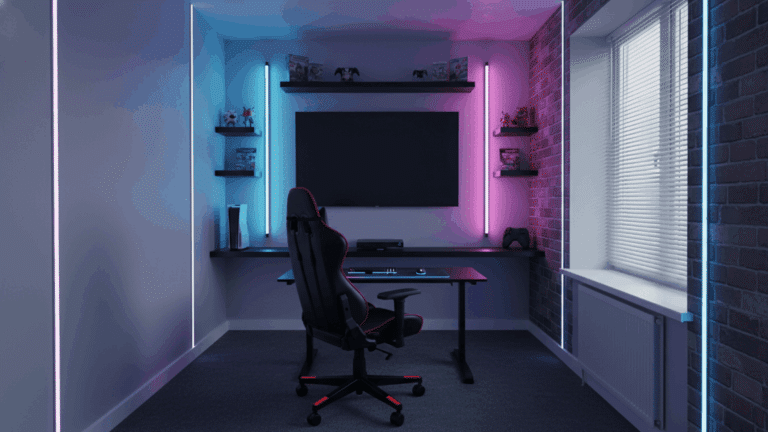Moving into a smaller home can be an exciting change, offering a chance to simplify your life and embrace a more intentional living space. However, downsizing comes with unique challenges, particularly when it comes to balancing functionality and style. Creating a home that feels both practical and visually appealing requires thoughtful planning, a clear understanding of your new space, and strategic decisions about what to keep and how to arrange it.
Evaluating Your Space and Needs
The first step in creating a functional and stylish smaller home is understanding the layout and dimensions of your new space. Before the move, take measurements of each room and make note of key features like windows, built-ins, and doorways. This information will help you decide which furniture and décor items will fit and which may need to be replaced or reimagined.
Take inventory of your belongings with an eye toward prioritizing essential items. Downsizing doesn’t mean sacrificing style—it means curating your possessions to reflect your personality while maximizing functionality. Ask yourself if each item serves a purpose or adds beauty to the space. Items that don’t meet these criteria might be better off left behind.
Additionally, mapping out how the new space will be used can help avoid overcrowding. Consider the daily activities that will take place in each room and plan the layout accordingly. For example, a combined living and dining area might benefit from furniture that defines zones while maintaining an open flow.
Utilizing Professional Services for a Smooth Transition

Downsizing is not just about moving your belongings—it’s about reimagining how they fit into a new, smaller space. This is where an expert’s help can make a significant difference. Interior design moving services are a valuable resource for homeowners navigating the complexities of downsizing. These services go beyond transportation; they provide support in arranging furniture and décor to optimize space and create a cohesive design.
Professionals in this field bring a trained eye for detail and a deep understanding of design principles, helping you make the most of every square foot. For example, they can advise on furniture placement, recommend storage solutions, and suggest ways to incorporate personal touches without overcrowding the space. By partnering with experts, you can streamline the transition into your new home while achieving a balance between style and practicality.
Prioritizing Multi-Functional Furniture
Once you’ve evaluated your space and enlisted professional support, the next step is selecting the right furniture. In smaller homes, multi-functional pieces are essential. These items save space while serving more than one purpose, making them both practical and stylish. Examples include sofa beds, storage ottomans, and extendable dining tables.
When choosing multi-functional furniture, consider pieces that align with the overall aesthetic of your home. Clean lines, neutral colors, and durable materials are often ideal for smaller spaces, as they help maintain a sense of openness and sophistication. Multi-functional furniture allows you to get the most out of your space without compromising comfort or style.
Incorporating Smart Storage Solutions
Storage is one of the biggest challenges when moving into a smaller home, but it’s also an opportunity to get creative. Thoughtful storage solutions can help keep your living space organized without compromising style. Hidden storage, such as ottomans or beds with built-in compartments, provides a way to stow away items without cluttering the room. Vertical storage options, like tall bookshelves or wall-mounted cabinets, make use of unused wall space, freeing up the floor for other purposes.
Maximizing closet space is another essential part of staying organized. Add shelving, baskets, and hanging organizers to make the most of every inch. Consider using decorative storage boxes or bins that complement the room’s design. These elements can keep your belongings accessible while maintaining a clean, cohesive look. Smart storage isn’t just practical—it also contributes to the aesthetic flow of your home by reducing visual clutter.
Designing for Light and Openness

In smaller spaces, light and color play a crucial role in creating a sense of openness. Lighter color palettes, such as whites, beiges, and pastels, can make rooms feel more spacious and airy. Pair these tones with minimalist designs to prevent the room from feeling overwhelming. Avoid bulky or overly ornate furniture, which can visually shrink the space.
Maximizing natural light is equally important. Opt for sheer curtains or blinds that allow sunlight to filter through, creating a warm and inviting atmosphere. Strategically placed mirrors can amplify natural light by reflecting it throughout the room. Consider hanging a large mirror on a wall opposite a window or placing smaller ones in darker corners to brighten the space.
Lighting fixtures also play a role in enhancing the ambiance of a smaller home. Overhead lighting combined with floor or table lamps creates layers of light that add depth to the room. Choose fixtures that align with your design aesthetic, such as sleek, modern pendant lights or minimalist sconces, to tie the space together.
.png)
Read more: When to Downsize and Sell Your Home
Adding Personality Through Décor
While functionality is a top priority in a smaller home, it’s equally important to make the space feel personal and inviting. Incorporating artwork, textiles, and decorative accents can add warmth and character to the room. Choose a few statement pieces, like a bold painting or a textured rug, to anchor the space and reflect your style.
When decorating, balance is key. Avoid overloading the room with too many decorative items, as this can create a cluttered appearance. Instead, opt for a curated approach, focusing on pieces that have meaning or align with your design vision. Functional décor, like stylish storage baskets or patterned throw pillows, can add personality while serving a purpose.
Greenery is another great way to enhance a smaller space. Plants bring life and vibrancy to any room and can be incorporated in creative ways, such as hanging planters or small pots on shelves. Low-maintenance options like succulents or snake plants are ideal for adding a touch of nature without requiring too much care.
Moving into a smaller home doesn’t mean sacrificing comfort or style. By incorporating smart storage solutions, designing for light and openness, and adding meaningful décor, you can create a space that is both functional and uniquely yours. Downsizing offers a chance to embrace simplicity and intentionality, resulting in a home that feels personal and welcoming. With thoughtful planning and a clear vision, your smaller home can be a fresh start filled with style and practicality.


















